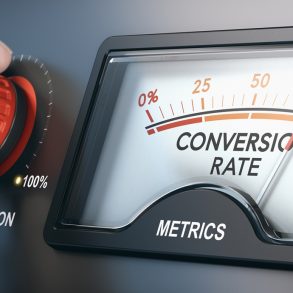 “Typically a lender’s biggest fear is an informed consumer,” says mortgage planner, Peter Majthenyi. (See this Q&A with Rob Carrick)
“Typically a lender’s biggest fear is an informed consumer,” says mortgage planner, Peter Majthenyi. (See this Q&A with Rob Carrick)
That’s because informed consumers are more likely to make choices that are less profitable for lenders.
Going variable is one choice that’s yielding less lender profit these days. For many lenders, gross margins are currently over 20 basis points better in fixed-rate mortgages than in variables.
The big banks salivate at the thought of homeowners paying elevated 4.65% 5-year bank rates. (We’re talking discretionary fixed rates here. The banks’ publically disseminated “special offer” rate is even higher: 4.85%.)
At 4.65%, the average 5-year fixed bank mortgage is 156 basis points over the GoC bond yield (based on Thursday’s close). That’s a succulent spread for a lender. Remember: Five weeks ago, some lenders were selling mortgages at spreads of half that.
Not everyone’s biting, though.
The 2.9 percentage point gap between fixed and variable rates is wide enough to drive a truck through. Informed and well-qualified consumers are therefore comparing today’s fixed rates to prime – .50% variables—and many are taking their chances in a floating rate.
 Here’s what others are saying about variable rates:
Here’s what others are saying about variable rates:
- “If you have been in the mortgage for a while, and your mortgage is not as large relative to your income, pay with the variable and you will do better over five years from now, but not significantly.” (CIBC economist, Benjamin Tal)
- “No matter who I am talking to, I ask them to conceive that we are going to see a 3% increase in mortgage rates over the next three years.” (Mortgage planner, Peter Kinch)
- Mortgage planner, Ranjit Dhaliwal, declares variables the mathematical winner, assuming a 3% increase in prime rate (i.e., A 25 bps hike every two months for 24 months). (BNN)
- “Borrowers who secured a variable in the last year or so, and are paying prime plus .25% or greater, should strongly consider paying their small discharge penalty and changing to a prime less .5% mortgage immediately” (Mortgage planner, Peter Majthenyi)
- Going variable “is [not] the kind of advice I would give to someone who is fairly well mortgaged up with a debt service rate of 40%.” (Scotia Mortgage Authority’s Jim Smith)
- If you’re well-suited to a variable, “Keep the variable rate, but keep making payments as if [you] were paying a fixed rate.” (Peter Kinch)
- “In the coming months, we are expecting lenders to price variable mortgages at Bank Prime less .25% (or 2%)… so take advantage of the maximum discounts right away.” (Peter Majthenyi)
(This is an interesting call. Most in the industry are expecting variable-rate discounts to remain the same or grow slightly bigger. Peter speculates that spreads will tighten as rates start rising, compelling lenders to decrease discounts. Just today, in fact, we saw one non-bank lender trim their variable discount. On the other hand, some feel that competition will force most lenders to absorb any margin compression and maintain variable discounts.)
______________________________________________
Sidebar: Professionals endlessly cite Moshe Milevsky’s widely quoted variable-rate research. They rely on Milevsky’s findings to state that borrowers have saved money in variables 89% of the time over the long-run.
Oddly, those same people rarely quote Milevsky’s updated mortgage research–which showed how the variable-rate advantage falls to 77% when the analysis uses discount mortgage rates instead of posted.
People also ignore Milesky’s warnings that it may be different this time, and that hybrid mortgages are often the most suitable solution of all. See: Fixed or Variable? Updated Perspectives
Important: Variables are not suitable for everyone, but they’re a sound calculated risk for some. For more decision factors, see: I.D.E.A.S. For Choosing Between A Fixed And Variable Rate)







Given that most economies around the world are still struggling, I can’t see Government Prime rates rising all that quickly.
The US will probably be stuck at 0.25% for a while… and Canada is almost never more than 1%-2% different than the US.
Closing in a month and not sure whether to go with a 5-year prime – 0.55% variable or 3.79% fixed. Any opinions appreciated. Thanks
I’m in the same boat with a 3.79% fixed locked in until July 28. Variable still seems pretty appealing though.
Has anyone done the research comparing 3-year (or even 2-year) “special” fixed rates vs. variable? I’m always struck by how much lower 3-year fixed rates are than 5-year. OTOH, 4-year rates are often very close to 5-year rates.
Personally, in the past I’ve stuck with 5-year fixed, but for my last lock-in (luckily at one of the lowest points in history, in March 2010), I went with a 3-year instead. There are a couple of mitigating factors which led me to this choice (including the fact it’s a cash back deal, and I’m not keen on being stuck with restrictions on cash back deals for 5 years). Nonetheless, going forward, in general I’d probably continue to strongly consider shorter terms for the lower rates, rather than get a 5-year fixed. Another option would be a hybrid of variable with a 3-year fixed.
However, I don’t have actual numbers to back that up, since I haven’t seen the comparison done of variable vs. 3-year.
Deciding, I took the prime – 0.55% for 5 years. It kicks in May 1. I think it’ll either save me money or it’ll work out to be about the same as a locked in rate. Time will tell
Don’t bet against the bet. A variable is the way to go.
That is a tough call. You could easily make a case for variable based on the numbers alone, but “safety” isn’t free.
To me Variable should be more of a luxury right now but like most luxurys, not everyone should go for it. If you have equity and your no tapped out financially, then take the variable. Save the money now and you can always fix it up later if need be.
If you are at the max of your buying power or if your income fluctuates on a month to month basis then I would stay safe, go fixed.
Although fixed rates have risen, these are still historically low rates for home buyers. For some of my clients I advise them not to take the risk of unexpected higher payments as that isn’t the best product for them specifically.
Leah
Personally, I think if we’re comparing fixed 5-year vs. variable prime – 0.5%, the time to go fixed was in March. Now that fixed rates have jumped 1%, variable has become a LOT more attractive, and will only get more attractive as variable increases, as I predict prime – 0.6 or prime – 0.7% may in fact become the norm.
robert.. which lender decreased their discount to prime?
Merix got rid of their P-.50 VRM. Not sure what it was changed to.
Hi Eug,
You’re no doubt right that it was a lot easier to swallow a 5-year fixed a month ago at ~3.69%.
It’ll be interesting to see how variable-rate discounts play out. If bankers’ acceptance yields stay elevated it’ll be unlikely to see materially bigger discounts before prime rate increases.
Cheers,
Rob
I think the banks know that the variable is going to stay low and are tricking people in to lock in a higher 5 year rate so they are guaranteed the higher rate for 5 years instead of going with the variable which will still be low. If you think about it do you think the banks really want us to be saving money and helping the consumer out and make less money off us. everything I see from our banks and politicians is the opposite of what they tell us is the truth.
steve b
Hi Eug,
We’ve run some hypothetical scenarios and a 3-year fixed, followed by a 1-year/VRM in years 4-5 is currently one of the best plays mathematically speaking.
This assumes a well-qualified risk-tolerant borrower and a rate increase pattern similar to what the Big 5 banks project. (This latter assumption is a pivotal factor and there is lots of room for error there.)
Nonetheless, if I were getting my own mortgage today I would certainly consider a 3-year.
Cheers,
Rob
These are excellent points Steve. Now as interest rate are starting to rise they will be more people moving that way, but it’s hard to say what the future will bring.
J. Shilman